1. Functional Requirements
1.1. 7. The Scope of the Work
1.1.1. 7a. The Current Situation
1.1.2. 7b. The Context of the Work
1.1.3. 7c. Work Partitioning
1.2. 8. The Scope of the Product
1.2.1. 8a. Product Boundary
1.2.2. 8b. Product Use Case List
1.2.3. 8c. Individual Product Use Cases
1.3. 9. Functional and Data Requirements
1.3.1. 9a. Functional Requirements
1.3.2. 9b. Data Requirements
2. Non Functional Requirements
2.1. 10. Look and Feel Requirements
2.1.1. 10a. Appearance Requirements
2.1.2. 10b. Style Requirements
2.2. 11. Usability and Humanity Requirements
2.2.1. 11a. Ease of Use Requirements
2.2.2. 11b. Personalization and Internationalization Requirements
2.2.3. 11c. Learning Requirements
2.2.4. 11d. Understandability and Politeness Requirements
2.2.5. 11e. Accessibility Requirements
2.3. 12. Performance Requirements
2.3.1. 12a. Speed and Latency Requirements
2.3.2. 12b. Safety-Critical Requirements
2.3.3. 12c. Precision or Accuracy Requirements
2.3.4. 12d. Reliability and Availability Requirements
2.3.5. 12e. Robustness or Fault-Tolerance Requirements
2.3.6. 12f. Capacity Requirements
2.3.7. 12g. Scalability or Extensibility Requirements
2.3.8. 12h. Longevity Requirements
2.4. 13. Operational and Environmental Requirements
2.4.1. 13a. Expected Physical Environment
2.4.2. 13b. Requirements for Interfacing with Adjacent Systems
2.4.3. 13c. Productization Requirements
2.4.4. 13d. Release Requirements
2.5. 14. Maintainability and Support Requirements
2.5.1. 14a. Maintenance Requirements
2.5.2. 14b. Supportability Requirements
2.5.3. 14c. Adaptability Requirements
2.6. 15. Security Requirements
2.6.1. 15a. Access Requirements
2.6.2. 15b. Integrity Requirements
2.6.3. 15c. Privacy Requirements
2.6.4. 15d. Audit Requirements
2.6.5. 15e. Immunity Requirements
2.7. 16. Cultural and Political Requirements
2.7.1. 16a. Cultural Requirements
2.7.2. 16b. Political Requirements
2.8. 17. Legal Requirements
2.8.1. 17a. Compliance Requirements
2.8.2. 17b. Standards Requirements
3. Project Issues
3.1. 18. Open Issues
3.2. 19. Off-the-Shelf Solutions
3.2.1. 19a. Ready-Made Products
3.2.2. 19b. Reusable Components
3.2.3. 19c. Products That Can Be Copied
3.3. 20. New Problems
3.3.1. 20a. Effects on the Current Environment
3.3.2. 20b. Effects on the Installed Systems
3.3.3. 20c. Potential User Problems
3.3.4. 20d. Limitations in the Anticipated Implementation Environment That May Inhibit the New Product
3.3.5. 20e. Follow-Up Problems
3.4. 21. Tasks
3.4.1. 21a. Project Planning
3.4.2. 21b. Planning of the Development Phases
3.5. 22. Migration to the New Product
3.5.1. 22a. Requirements for Migration to the New Product
3.5.2. 22b. Data That Has to Be Modified or Translated for the New System
3.6. 23. Risks
3.7. 24. Costs
3.8. 25. User Documentation and Training
3.8.1. 25a. User Documentation Requirements
3.8.2. 25b. Training Requirements
3.9. 26. Waiting Room
3.10. 27. Ideas for Solutions
4. Project Drivers
4.1. 1. The Purpose of the Project
4.1.1. 1a. The User Business or Background of the Project Effort
4.1.2. 1b. Goals of the Project
4.2. 2. The Client, the Customer, and Other Stakeholders
4.2.1. 2a. The Client
4.2.2. 2b. The Customer
4.2.3. 2c. Other Stakeholders
4.3. 3. Users of the Product
4.3.1. 3a. The Hands-On Users of the Product
4.3.2. 3b. Priorities Assigned to Users
4.3.3. 3c. User Participation
4.3.4. 3d. Maintenance Users and Service Technicians
5. Project Constraints
5.1. 4. Mandated Constraints
5.1.1. 4a. Solution Constraints
5.1.2. 4b. Implementation Environment of the Current System
5.1.3. 4c. Partner or Collaborative Applications
5.1.4. 4d. Off-the-Shelf Software
5.1.5. 4e. Anticipated Workplace Environment
5.1.6. 4f. Schedule Constraints
5.1.7. 4g. Budget Constraints
5.2. 5. Naming Conventions and Definitions
5.2.1. 5a. Definitions of All Terms, Including Acronyms, Used in the Project
5.2.2. 5b. Data Dictionary for Any Included Models
5.3. 6. Relevant Facts and Assumptions
5.3.1. 6a. Facts
5.3.2. 6b. Assumptions
